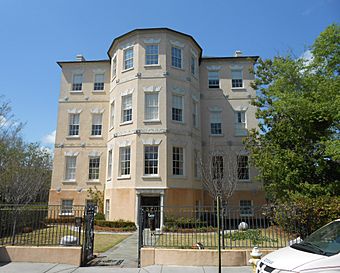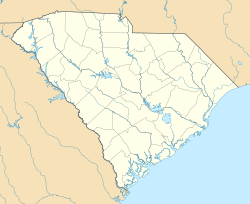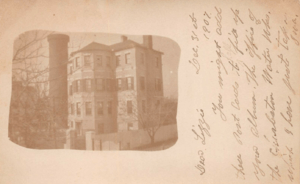Middleton-Pinckney House facts for kids
Quick facts for kids |
|
|
Middleton-Pinckney House
|
|
|
U.S. Historic district
Contributing property |
|

Middleton-Motte-Pinckney House in 2013
|
|
| Location | 14 George Street Charleston, South Carolina, 29401 |
|---|---|
| Built | 1796 |
| Architectural style | Neoclassical |
| Part of | Charleston Historic District (ID66000964) |
| Designated CP | October 9, 1960 |
The Middleton-Pinckney House is a historic three-story home located at 14 George Street in Charleston, South Carolina. It is found in the Ansonborough neighborhood. This beautiful house was started in 1796 by Frances Motte Middleton. She bought the land next to her father's property to build it.
Frances completed the house with her second husband, Maj. Gen. Thomas Pinckney. They married in 1797. The house is an important part of Charleston's history. It shows the style of homes built during that time.
Early Years of the House
Frances and Thomas Pinckney lived in the house from at least 1801. In 1825, they sold it to Frances's son, John Middleton. He paid $10,000 for the property.
Around 1816, the family may have moved out for a short time. This was possibly to update the house. They might have wanted to change it to the popular Regency style. A newspaper ad from 1816 described the house as an "unfinished Brick Building." It also mentioned a kitchen house and another brick building.
New Owners and Uses
John Middleton passed away in 1826. The house was then sold to Mrs. Juliet Gibbes Elliott. After she bought it, the house became known as the Elliott Mansion. It remained a private home for many years.
In 1879, Jesse W. Starr, Jr. bought the house from Mrs. Elliott's family. He then sold it to the Water Works Company of Charleston in 1880. This company was a private business. The city of Charleston took over its operations in 1917.
Modern Day Use
In 1988, the Middleton-Pinckney House found a new purpose. It became the main office for the Spoleto Festival USA. This is a famous arts festival held in Charleston.
The City of Charleston gave the house to the festival in 2002. The festival then worked to restore the property. The house is recognized as a historic building. It is listed on the National Register of Historic Places. This means it is an important part of the Charleston Historic District.




